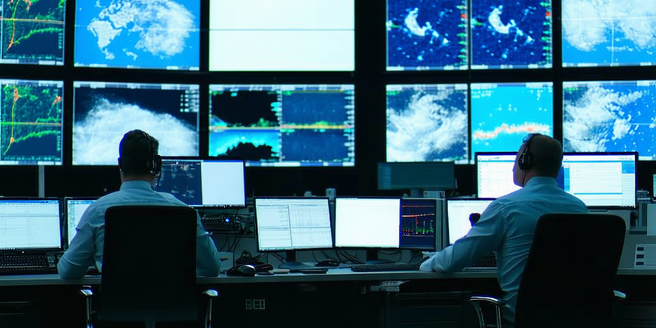
Understanding the Basics of Satellite Technology in Meteorology
Satellite technology plays a crucial role in modern meteorology. It provides vital data for weather observation, enabling scientists to track weather patterns and predict potential changes. Satellites orbit the Earth, gathering information on temperature, humidity, and atmospheric pressure. This information is crucial in understanding weather dynamics. By capturing real-time data, meteorologists can detect weather phenomena such as hurricanes, storms, and heatwaves. Additionally, satellite imagery aids in monitoring long-term climate changes, offering insights into global warming and its impacts. Furthermore, satellites help develop accurate weather models, ensuring reliable forecasts that can save lives and protect property. Their ability to cover vast areas and remote regions makes satellites indispensable tools in meteorology. As technology advances, the precision and scope of satellite data continue to improve, further enhancing weather prediction capabilities.
The Role of Satellites in Enhancing Weather Forecasting
Satellites are pivotal in enhancing the accuracy and reliability of weather forecasting. They offer a broad perspective, monitoring weather systems as they develop and move across the globe. This global coverage allows meteorologists to gather comprehensive data on cloud patterns, atmospheric composition, and surface temperatures. With improved satellite capabilities, data on climate change patterns can also be meticulously analyzed. Satellites like GOES-16 and MetOp play a critical role in tracking severe weather conditions, giving advanced warnings for hurricanes and tornadoes. By providing real-time updates, they help forecasters identify trends and make informed predictions, minimizing the potential impact of natural disasters. The continuous evolution in satellite technology ensures that weather forecasting becomes increasingly precise, contributing to public safety and economic protections.
How Satellite Imagery Improves Weather Prediction Precision
Satellite imagery is integral to improving the precision of weather predictions. High-resolution images from space offer detailed insights into atmospheric conditions and cloud structures. These images help meteorologists analyze weather systems and develop more accurate predictive models. Infrared and visible light sensors on satellites monitor temperature changes and track moisture levels, providing critical data on storm development. Additionally, satellite data has been instrumental in understanding climate change patterns. With this information, weather models can be updated in real time, allowing for prompt adjustments to forecasts. This leads to more precise predictions of rainfall, storm paths, and temperature fluctuations. The advancement of satellite imagery technologies continues to enhance the accuracy of weather predictions, leading to better preparedness and response strategies.
Advancements in Satellite Technology and Their Impact on Climate Studies
Recent advancements in satellite technology have significantly impacted climate studies. Improved sensors and advanced data analysis techniques have increased our ability to study climate patterns and variations. With these tools, researchers can gain insights that were previously inaccessible. Satellites now provide high-resolution data on ocean currents, ice melting, and deforestation, critical for understanding climate change. This data is essential for developing climate models and studying the effects of global warming. Satellites like Sentinel-6 and Landsat 9 offer unprecedented detail, allowing scientists to monitor changes over time and assess their ecological impact. As technology progresses, the information gathered will enhance climate modeling, contributing to strategies aimed at mitigating climate change and fostering global sustainability.
Challenges and Future Directions in Weather Satellite Technology
Despite significant advancements, weather satellite technology faces challenges. Satellites are costly to develop, launch, and maintain, and they face risks from space debris and harsh space environments. Data interpretation also presents challenges due to the vast amount of information collected. Efforts are underway to ensure these systems are sustainable and efficient in the long term. To overcome these, researchers are focusing on improving satellite durability and data processing capabilities. The future of weather satellite technology lies in smaller, more cost-efficient satellites and the integration of artificial intelligence for data analysis. These advancements could offer enhanced resolution and quicker data turnaround. Continued innovation in satellite technology will revolutionize weather prediction and research, enabling more effective responses to climate and weather challenges.
